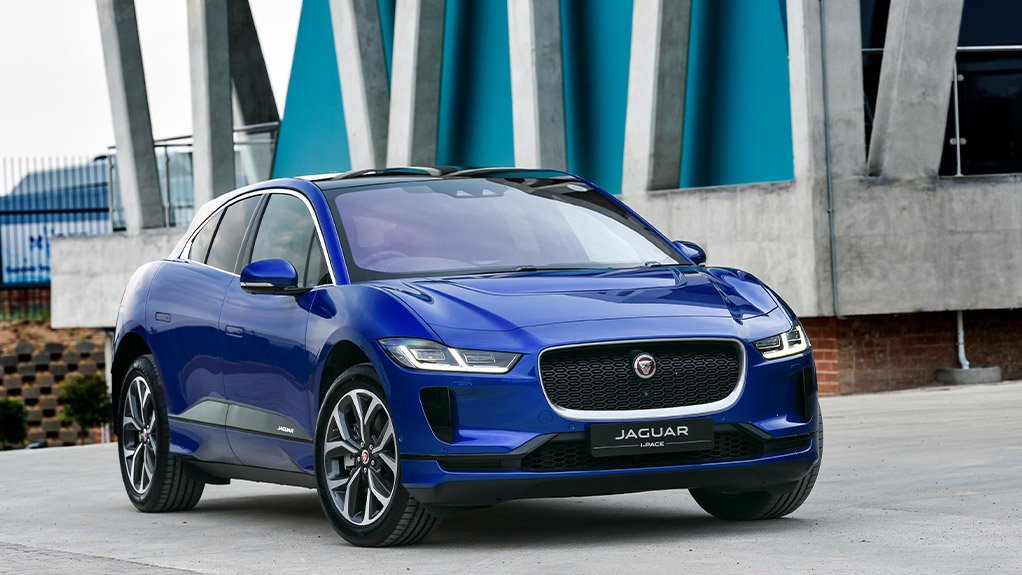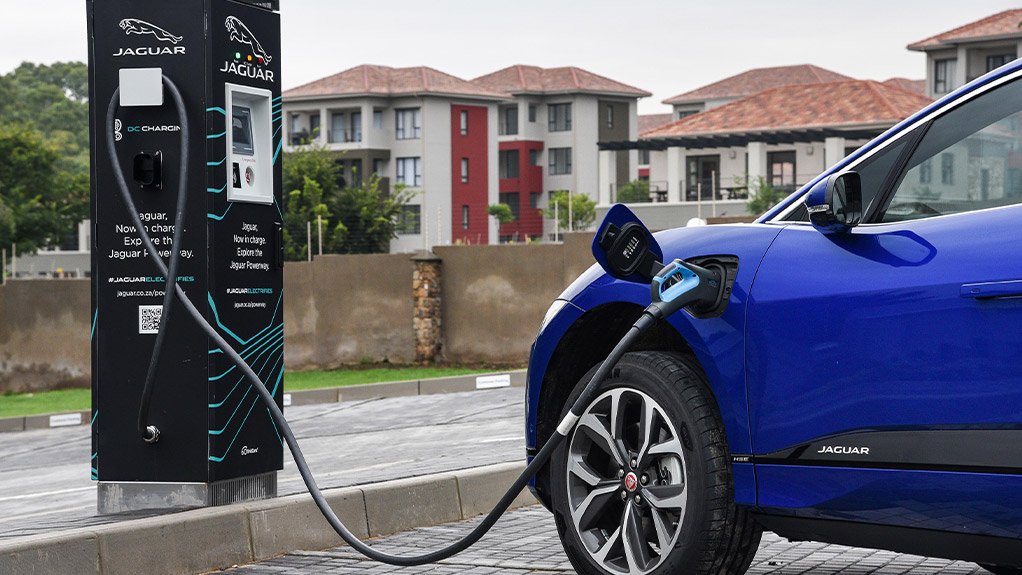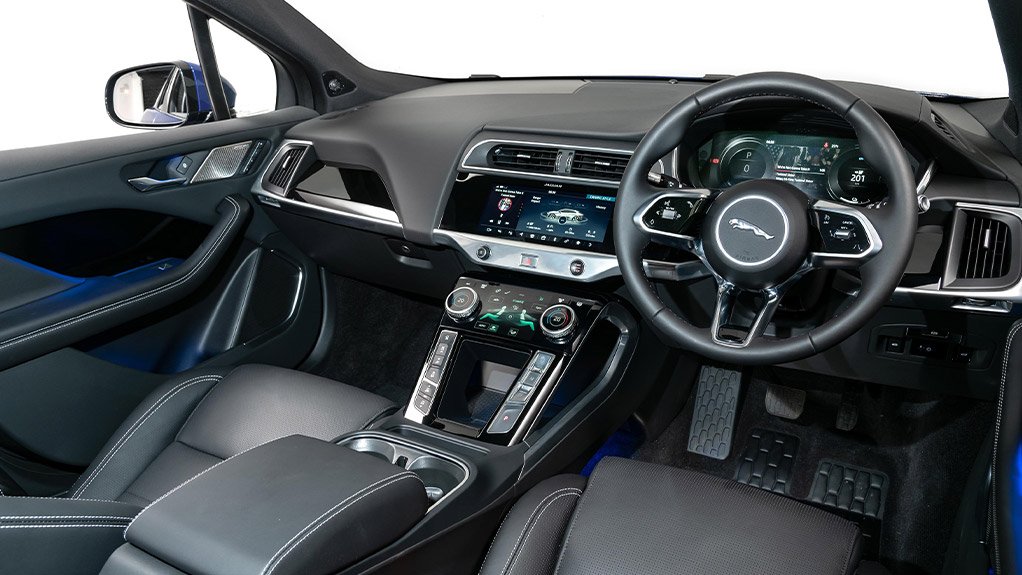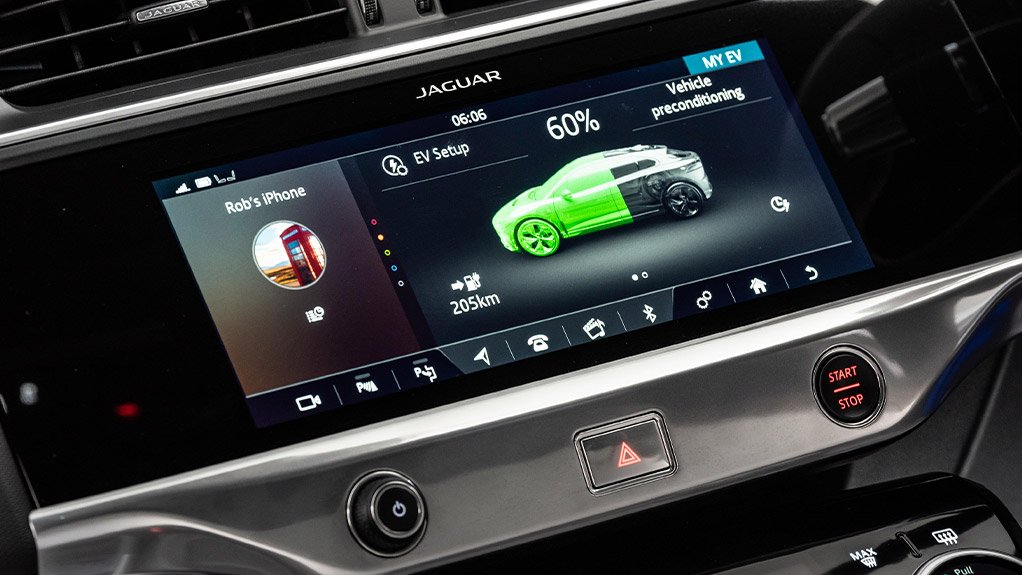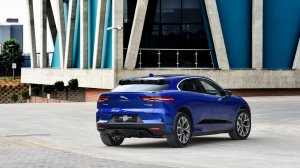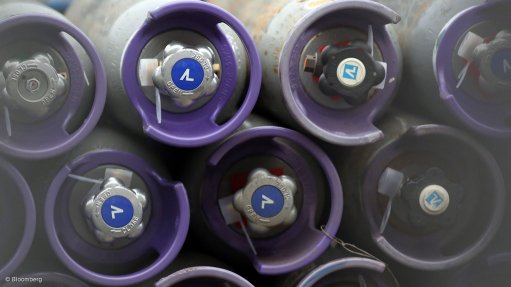No escaping the move to electric, says Jaguar as it launches new I-Pace
A third fully electric vehicle has made its debut in South Africa.
The new Jaguar I-Pace adds to the Nissan Leaf and BMW i3 already available in the local market.
By far the most expensive, at a starting price of R1.68-million – more than double the best-selling electric vehicle – the I-Pace also offers almost double the range, at up to 470 km, before it requires recharging.
Jaguar Land Rover South Africa and sub-Sahara Africa (JLR SA) this month launched the vehicle into a market that has shown that it is not yet too keen on battery-electric vehicles (BEVs), with local sales declining from 117 units in 2015, to 66 units in 2018.
Perhaps the rather steep price tag of BEVs has something to do with this trend, or the continued generation woes facing power producer Eskom.
Whatever the reason, South Africa will not be able to escape the international trend towards electrification, says JLR SA network director Brian Hastie.
“Electric vehicles are growing fast in all major markets and on all continents. In 2019 Europe we’ll see the launch of around 20 new and/or face-lifted electrified vehicles, and South Africa normally follows European trends.
“As Jaguar Land Rover, our global strategy is to have an electrified vehicle available in every model range from 2020, and these vehicles will also come to South Africa.”
Electrified vehicles include BEVs, plug-in hybrids and mild hybrids.
As part of its electrification strategy, Jaguar Land Rover believes in 100% support through the dealer and service network from day one, notes Hastie, and this is also the case in South Africa.
“We want to take away the obstacles to electric from day one. Our approach is not to ‘see how it goes’, but to have a dedicated strategy to sell and support BEVs in South Africa.”
He adds that the I-Pace’s range sets it apart from competitors, as it all but removes range anxiety – that fear of running out of juice before reaching a charging station – as 470 km more than covers the daily needs of most South African motorists.
A solution called Jaguar Powerway will cater for longer trips.
Jaguar, in partnership with electric vehicle charging company GridCars, last year announced the rollout of the Jaguar Powerway network.
This network comprises a national matrix of rapid public charging stations, with more than 85 charging stations in the country’s major hubs and along frequently travelled holiday routes.
This R30-million infrastructure investment makes day-to-day travel, as well as longer day trips and even long journeys possible for owners of electric vehicles, says Hastie.
SA Sales and Eskom
Declining BEV sales in South Africa is a function of model availability more than the broader appeal of the technology, believes Hastie.
“We have had two BEV hatchbacks available in South Africa up to now, and nothing in the more popular sports-utility vehicle (SUV) segment.”
The I-Pace is a high-end SUV.
“This is an aspirational vehicle. It’s a five-seater with high-end features, with impressive performance on and off the road,” says Hastie.
He believes more affordable BEVs will eventually find their way to South Africa, including from the JLR SA stable.
A boost from government in the form of an import duty reduction over the next three to four years will help boost local BEV sales, he adds.
At the moment, BEV sales are facing an import duty of 25% from Europe – 7% more than the standard import duty of 18%.
Hastie would like to see this additional charge disappear.
“Government could help us to grow BEVs in an orderly, steady, standardised manner, so that by 2025 BEVs are a well-adopted technology in South Africa.
“This should also help local vehicle manufacturers, which will have to move to include BEV production at some point seeing that they produce a significant number of export vehicles for Europe.
“Also, for a vehicle to be produced in South Africa, you do need a certain degree of local consumption, BEVs included.”
Creating an industry around BEVs could also provide additional VAT streams and job opportunities for government.
Eventually, battery costs will flatten, and the price of BEVs will finally equal that of internal combustion engines, notes Hastie.
As for the sporadic power interruptions currently facing the country courtesy of Eskom, Hastie believes South Africa’s “power generation problems will be solved”.
He says Eskom has indicated that it is ready to provide off-peak billing for overnight vehicle charging, when power demand is low.
It costs around 66% less to charge an I-Pace compared with filling a vehicle of similar size and performance with traditional fuel.
Recharging can take 10 to 12 hours with an AC charger at home. Charging at DC quick-charge points can provide a 100 km range in 20 to 30 minutes.
Each I-Pace, imported from Austria, is sold with a home charger, at an additional R30 000 cost.
“We have had significant local interest in the I-Pace in South Africa,” says Hastie.
“The current waiting period is two to six months, so sales will probably suffer a bit due to the supply available to use, more than anything else.”
The I-Pace can travel from zero to 100 km/h in 4.8 seconds.
It is sold with an eight-year/160 000 km battery warranty and two-year/34 000 km service intervals.
Comments
Press Office
Announcements
What's On
Subscribe to improve your user experience...
Option 1 (equivalent of R125 a month):
Receive a weekly copy of Creamer Media's Engineering News & Mining Weekly magazine
(print copy for those in South Africa and e-magazine for those outside of South Africa)
Receive daily email newsletters
Access to full search results
Access archive of magazine back copies
Access to Projects in Progress
Access to ONE Research Report of your choice in PDF format
Option 2 (equivalent of R375 a month):
All benefits from Option 1
PLUS
Access to Creamer Media's Research Channel Africa for ALL Research Reports, in PDF format, on various industrial and mining sectors
including Electricity; Water; Energy Transition; Hydrogen; Roads, Rail and Ports; Coal; Gold; Platinum; Battery Metals; etc.
Already a subscriber?
Forgotten your password?
Receive weekly copy of Creamer Media's Engineering News & Mining Weekly magazine (print copy for those in South Africa and e-magazine for those outside of South Africa)
➕
Recieve daily email newsletters
➕
Access to full search results
➕
Access archive of magazine back copies
➕
Access to Projects in Progress
➕
Access to ONE Research Report of your choice in PDF format
RESEARCH CHANNEL AFRICA
R4500 (equivalent of R375 a month)
SUBSCRIBEAll benefits from Option 1
➕
Access to Creamer Media's Research Channel Africa for ALL Research Reports on various industrial and mining sectors, in PDF format, including on:
Electricity
➕
Water
➕
Energy Transition
➕
Hydrogen
➕
Roads, Rail and Ports
➕
Coal
➕
Gold
➕
Platinum
➕
Battery Metals
➕
etc.
Receive all benefits from Option 1 or Option 2 delivered to numerous people at your company
➕
Multiple User names and Passwords for simultaneous log-ins
➕
Intranet integration access to all in your organisation



